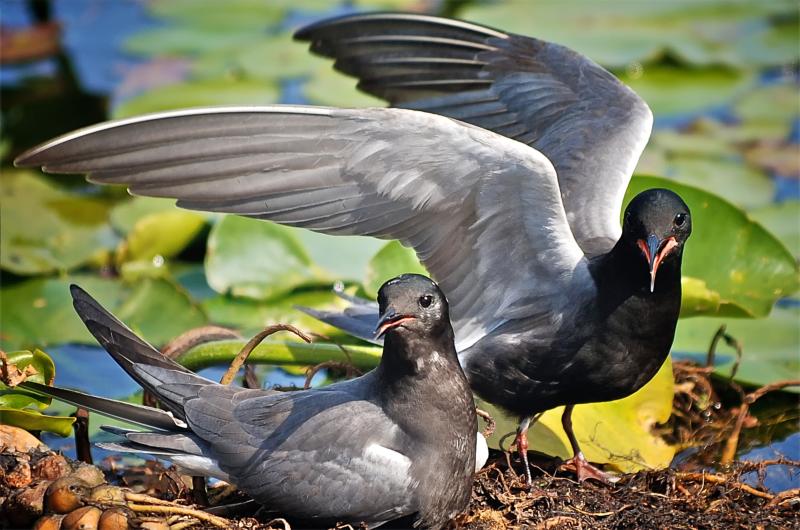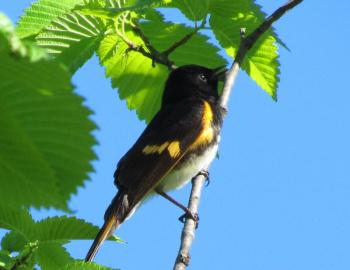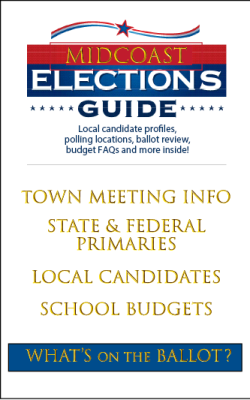Over the weekend, we were out doing some errands in Augusta when it occurred to us that we could easily add one more “errand” into our itinerary. Only a few minutes farther north from the Augusta Civic Center area, where we were making a trip for home supplies, is one of the most special bird places in Maine. That spot—the south end of Messalonskee Lake--is one of only a handful of places in the entire state where the striking and state-endangered black tern nests.
This new errand was going to entail checking to see if the black terns had arrived back yet. Black terns winter along the northern South American coast (occasionally farther south). They make their way back to their breeding grounds in May.
Soon after we arrived at the boat launch at the south end of Messalonskee Lake on Route 27, the loud, bugling calls of a sandhill crane came echoing in from the eastern side of the lake. This southern end of the lake is a mix of low bog and wetland shrub, with cattails and open water channels that widen into a wider channel and then eventually into open lake. This mix of habitat makes it incredibly rich and full of wetland birds.
Swamp sparrows and common yellowthroats sang. A Wilson’ snipe flew by looking distinctly awkward with its short, plump body and long bill. A Virginia rail sounded off its “kiddick, kiddick, kiddick” call from somewhere nearby, staying predictably hidden from view. A common loon floated out into the open water of the channel, elegant in its summer plumage with a sleekly black head and black-and-white checked back.
And then there was a tern. Not a tern flashing white underneath like the common terns we see so regularly along the coast. No, this tern had a black head, chest, and belly—the field marks of the bird we had come to see—the black tern. Scanning with the telescope, we could see more sitting on the top of the red and green channel marker buoys and more flying strongly around over the marsh grass in the distance. We counted at least eight!
Later, our friend Don stopped by. Don grew up near the lake and has been monitoring the birds and bugs here and throughout the state for more than 60+ years. He checks the lake just about every day and told us that the terns had come back just a few days earlier.
While we chatted, a Baltimore oriole piped loudly from the treetops. The little patch of woods near the parking lot had its resident least flycatcher proclaiming “che-bek, che-bek.” That was our first one of the year, but we’ve heard one in that same spot for decades. A warbling vireo burst out with its repetitive, “if you see me, you can squeeze me, you can squeeze me till I squirt.” Yellow warblers chased each other in the locust trees, and a young male American redstart flitted by, showing off his yellow tail patches, as we watched.
This was an “errand” that we would recommend to anyone!
Jeffrey V. Wells, Ph.D., is a Fellow of the Cornell Lab of Ornithology and Vice President of Boreal Conservation for National Audubon. Dr. Wells is one of the nation's leading bird experts and conservation biologists. He is a coauthor of the seminal “Birds of Maine” book and author of the “Birder’s Conservation Handbook.” His grandfather, the late John Chase, was a columnist for the Boothbay Register for many years. Allison Childs Wells, formerly of the Cornell Lab of Ornithology, is a senior director at the Natural Resources Council of Maine, a nonprofit membership organization working statewide to protect the nature of Maine. Both are widely published natural history writers and are the authors of the popular books, “Maine’s Favorite Birds” (Tilbury House) and “Birds of Aruba, Bonaire, and Curaçao: A Site and Field Guide,” (Cornell University Press).































